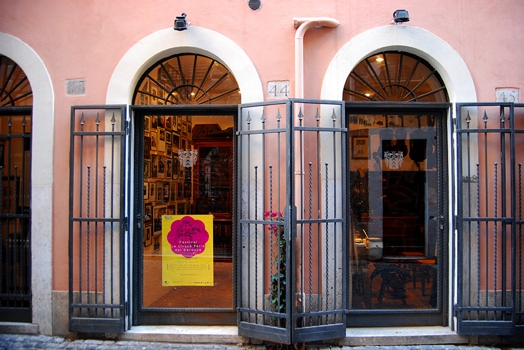Cellos & Calligraphy
By Nick Misani
On Tuesday, I was fortunate enough to witness two masters within their respective elements. The morning began with a four-hour-long lecture on the history of Western typographic form given by James Clough; a man with an encyclopedic knowledge of history, humbling virtuosic skill, and the stamina of an Olympic athlete. This was a fascinating tour de force though the minutiae of form and Darwinian evolution of the shapes we are so accustomed to seeing today. Always enthusiastic and engaging, his journey gave us all a great appreciation, if not a sense of almost divine reverence, of the forms that have come to us, polished to perfection, though the hands and minds of hundreds of skilled typographers, printers, and artists.
After the lecture, the class quickly gathered around James to witness–through quick and secure movements of his nib–the creation of the shapes we had just studied. A mesmerizing choreography of ink on paper that left us all itching to try it ourselves.
Armed with sharp 3B pencils and pristine erasers, we were free to experiment and interpret (within the strict canons of classical typography) enlarged reproductions of the letters of the De Aetna by Pietro Bembo. The ambiguity the forms allowed some of us to explore geometric, triangular serifs, while others favored gentler, teardrop finials. In our own small way, we were cumulatively adding our personal voices to a dialogue that has been taking place for hundreds of years.
Shortly after class, I headed toward Campo dei Fiori–a lovely area filled with shops and restaurants–to meet a friend of my mother who owns a violin-making studio. I walked past a clarinetist playing to a group of tourists enjoying their dinner and, with Gershwin and Sondheim still in the air, I reached the transparent doors of his atelier. The small, though remarkable space visible though the glass was a wunderkammer crammed with antique instruments, breathtaking framed prints, and fascinatingly esoteric tools scattered–as if in a Baroque painting–among gilded harps and imposing cellos. Lining the wall were rows of violins in various states of completion, visible behind a working desk that, though antique, was clearly still being used.
In the next few days, if any of you are in the area, I recommend stopping by and peering through the glass into a world that–though upon first glance might appear dramatically different from our own–harmonizes wonderfully with our study of classical typography in the Eternal City though the shared pursuit of formal grace and the reverence of antiquity and tradition.
The atelier is located on Vicolo delle Grotte, 45.



